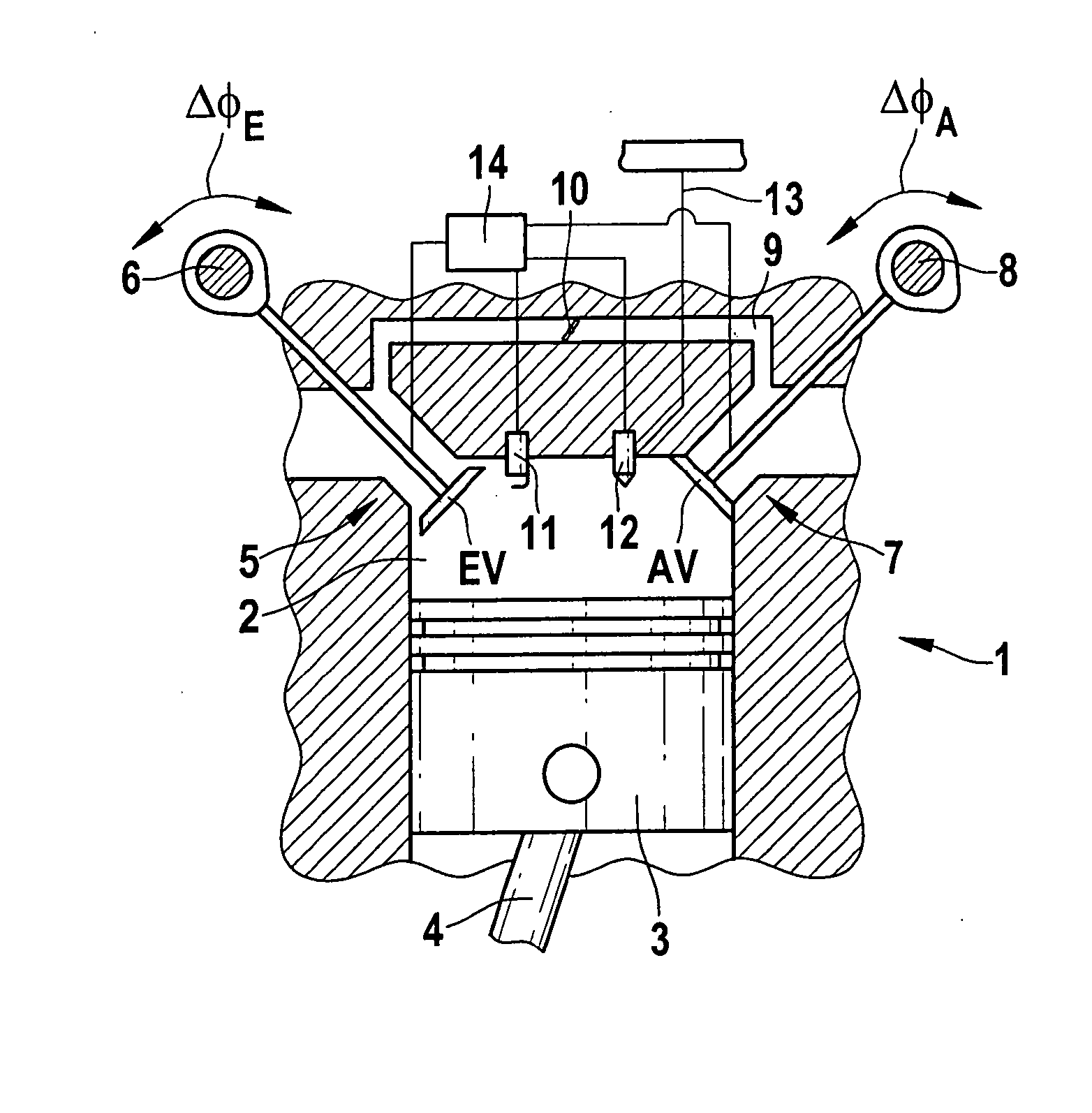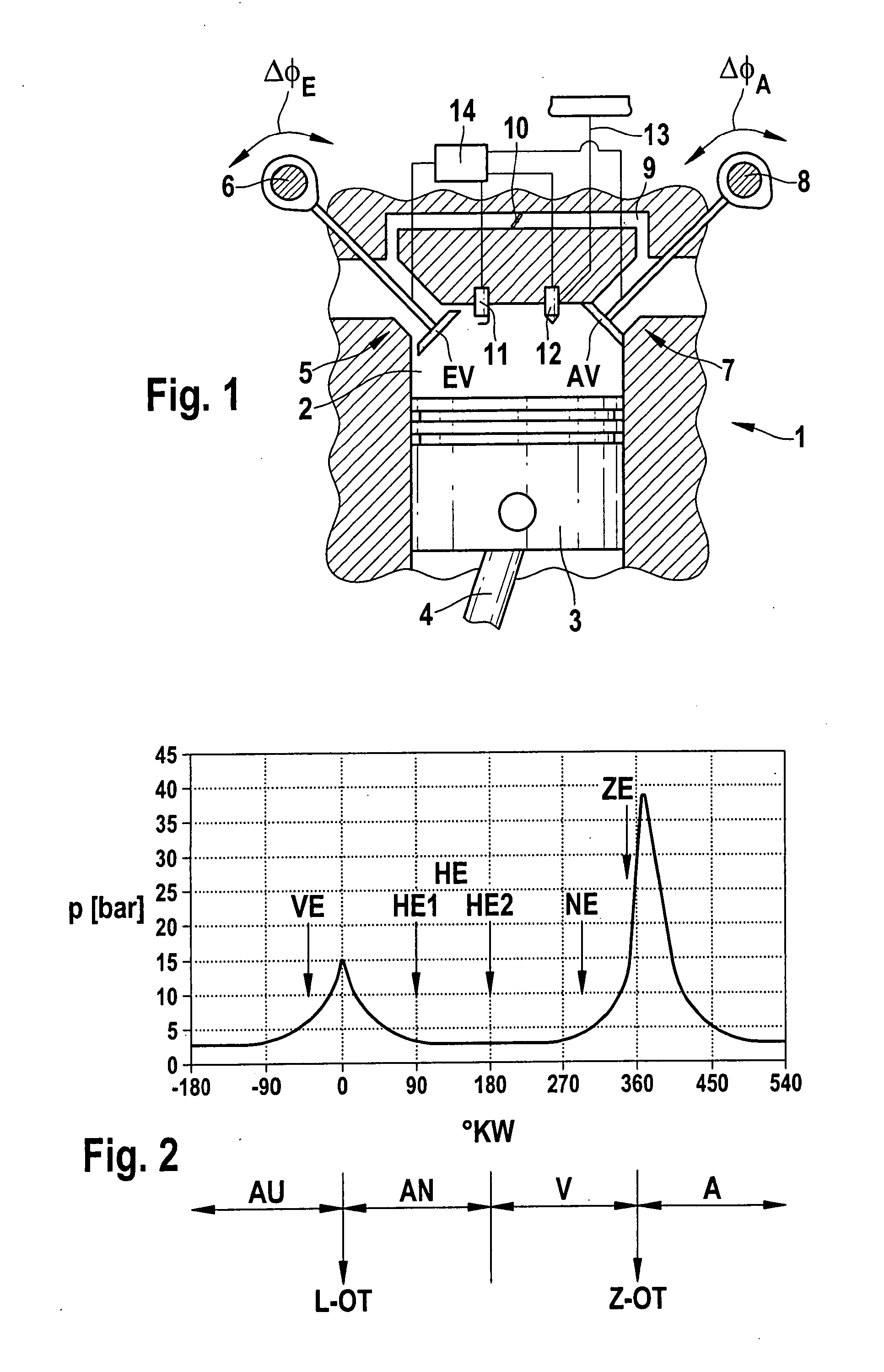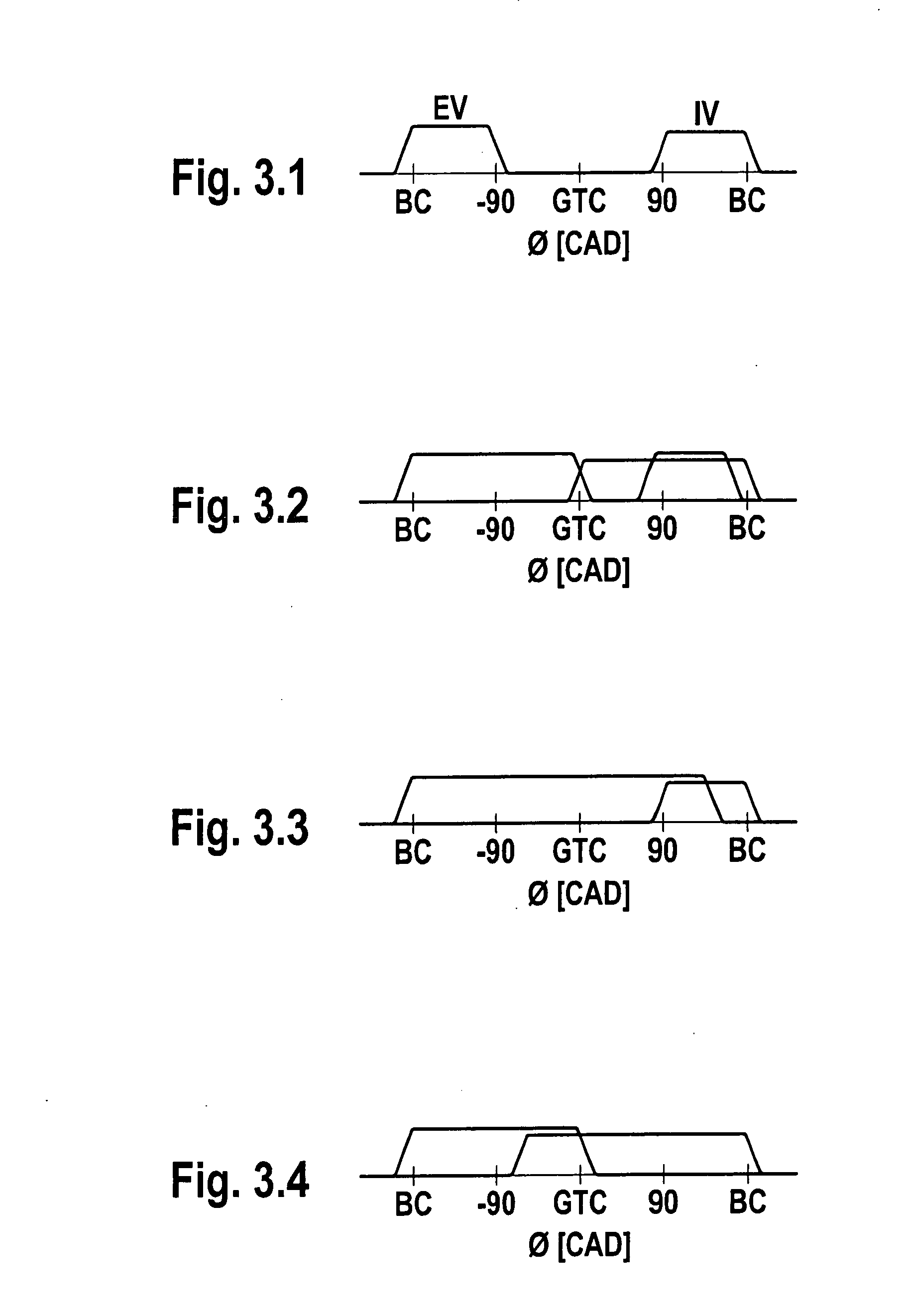Procedure for the operation of an internal combustion engine
a technology for internal combustion engines and procedures, applied in the direction of machines/engines, electric control, instruments, etc., can solve the problems of difficult open-loop control of the combustion process and especially the open-loop control of the self-ignition, and achieve the effect of reducing the frequency
- Summary
- Abstract
- Description
- Claims
- Application Information
AI Technical Summary
Benefits of technology
Problems solved by technology
Method used
Image
Examples
Embodiment Construction
[0029] Using FIG. 1 the technological environment of the invention is first described. A cylinder 1 is depicted of an otherwise unspecified internal combustion engine, which as a rule consists of multiple cylinders. The cylinder 1 comprises a combustion chamber 2, in which a piston 3 with a connecting rod 4 is disposed in a manner capable of repositioning. The connecting rod 4 is connected to an unspecified crankshaft. An intake inlet 5 with an intake valve EV opens out into the combustion chamber 2. Additionally an exhaust outlet 7 with an exhaust valve AV opens out into the combustion chamber 2. The intake valve EV as well as the exhaust valve AV is actuated by way of an adjustable camshaft, or as depicted here with two adjustable camshafts 6, 8. The internal combustion engine is then equipped with a so-called partially variable valve control system. In the partially variable valve-train assembly like this one, which is known from the German patent DE 199 29 393, the valve timing ...
PUM
 Login to View More
Login to View More Abstract
Description
Claims
Application Information
 Login to View More
Login to View More - R&D
- Intellectual Property
- Life Sciences
- Materials
- Tech Scout
- Unparalleled Data Quality
- Higher Quality Content
- 60% Fewer Hallucinations
Browse by: Latest US Patents, China's latest patents, Technical Efficacy Thesaurus, Application Domain, Technology Topic, Popular Technical Reports.
© 2025 PatSnap. All rights reserved.Legal|Privacy policy|Modern Slavery Act Transparency Statement|Sitemap|About US| Contact US: help@patsnap.com



